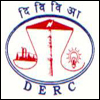With a view to create an environment conducive for promotion of renewable energy technologies and also seek active participation of consumers in the distribution of power generated from renewable energy sources in the capital, the Delhi Electricity Regulatory Commission recently announced net metering regulations for renewable energy.
Under the DERC (Net Metering for Renewable Energy) Regulations, 2014, a consumer will be able to install a renewable energy system in his premises for connectivity with the power supply system of the distribution company in the area. The capacity of the renewable energy system to be installed is subject to feasibility of interconnection with the grid, available capacity of the service line connection to the premises and sanctioned load of the premises. The capacity of the renewable energy system cannot be less than one kW peak.
The distribution licensee will allow connectivity to the renewable energy system provided the available capacity of the particular distribution transformer for connectivity is not less than the limit set by DERC. The grid interactive renewable energy system may be with or without battery back-up. Where battery back-up is opted for, the inverter needs to have separate back-up wiring to prevent the flow of power from the battery/decentralised generation into the grid in absence of grid supply along with a manual isolation switch. The consumer’s premises will have two meters – renewable energy meter for measuring the energy generated from renewable energy source and net meter for measuring the energy drawn from the grid and exported to the grid.
The net metering scheme will allow the consumer to inject any surplus energy into the grid and earn energy credits. The forwarded energy credits can be subsequently drawn back within the financial year. At the end of the financial year, the unadjusted net energy credits will be paid for by the distribution licensee to the consumer at rates notified by the DERC. No deemed generation charges are payable to the consumer. The renewable energy system under net metering arrangement will be exempt from wheeling, banking, cross subsidy and other charges for a period of five years, unless extended thereafter.
The net metering scheme offers several benefits to both the participating consumer and distribution licensee.
In terms of benefits to the consumer, a subsidy at the rate of 30 per cent of the capital cost is presently being provided by the Ministry of New and Renewable Energy. Also, since the renewable energy system installed under the scheme will be grid-connected, the cost of storage battery can be avoided. The energy generated from such renewable energy sources will not attract Power Purchase Cost Adjustment Charges and remain insulated from some of the escalation factors.
The utilities will benefit from the net metering scheme through reduction in distribution losses. Besides, onsite generation reduces dependence on the grid during grid failure and helps in the islanding scheme. The quantum of electricity generated under the net metering scheme will qualify towards compliance of Renewable Purchase Obligation for the distribution licensee provided the renewable energy generator is not an obligated entity.
The net metering scheme is expected to provide the capital a sustainable energy source with no input fuel costs involved. Though the DERC net metering regulations cover power generated from all renewable energy sources, only solar power generation is feasible in Delhi.











